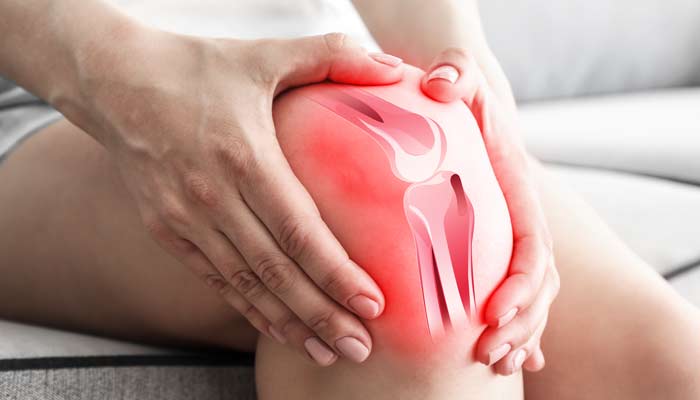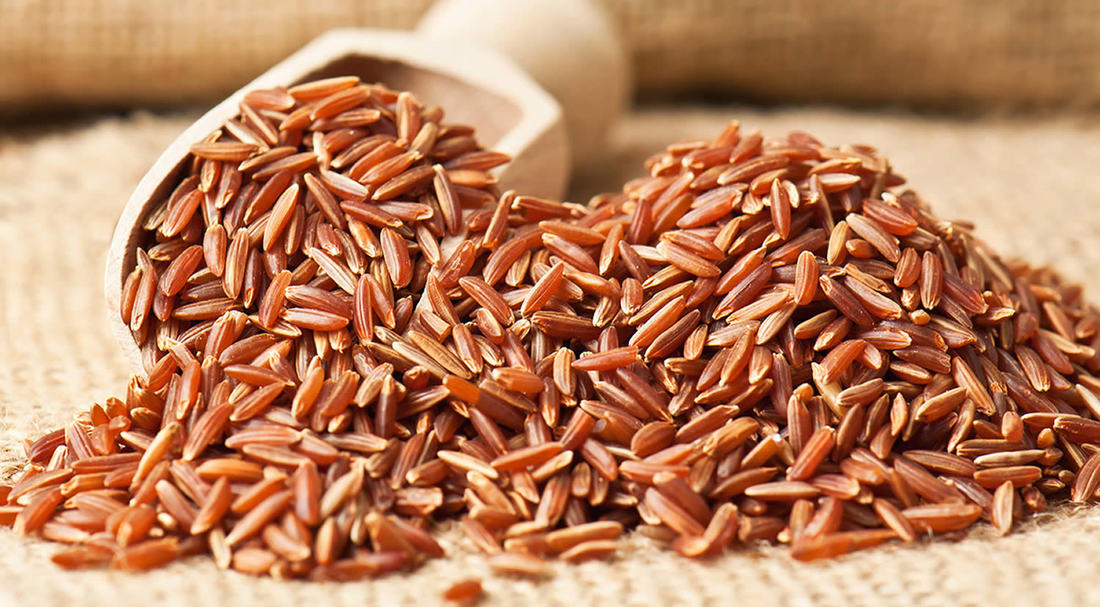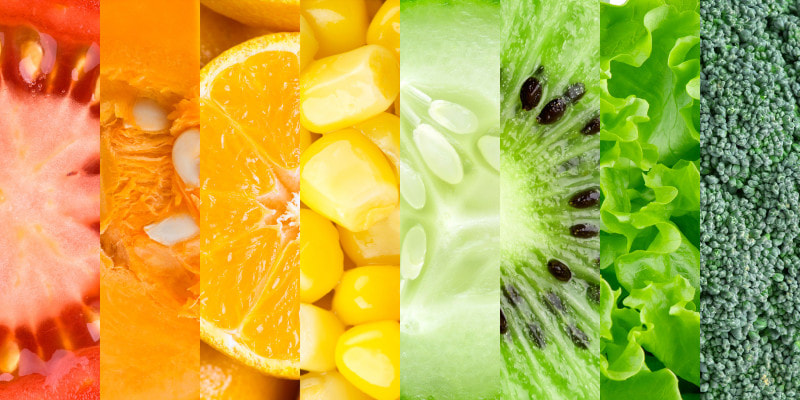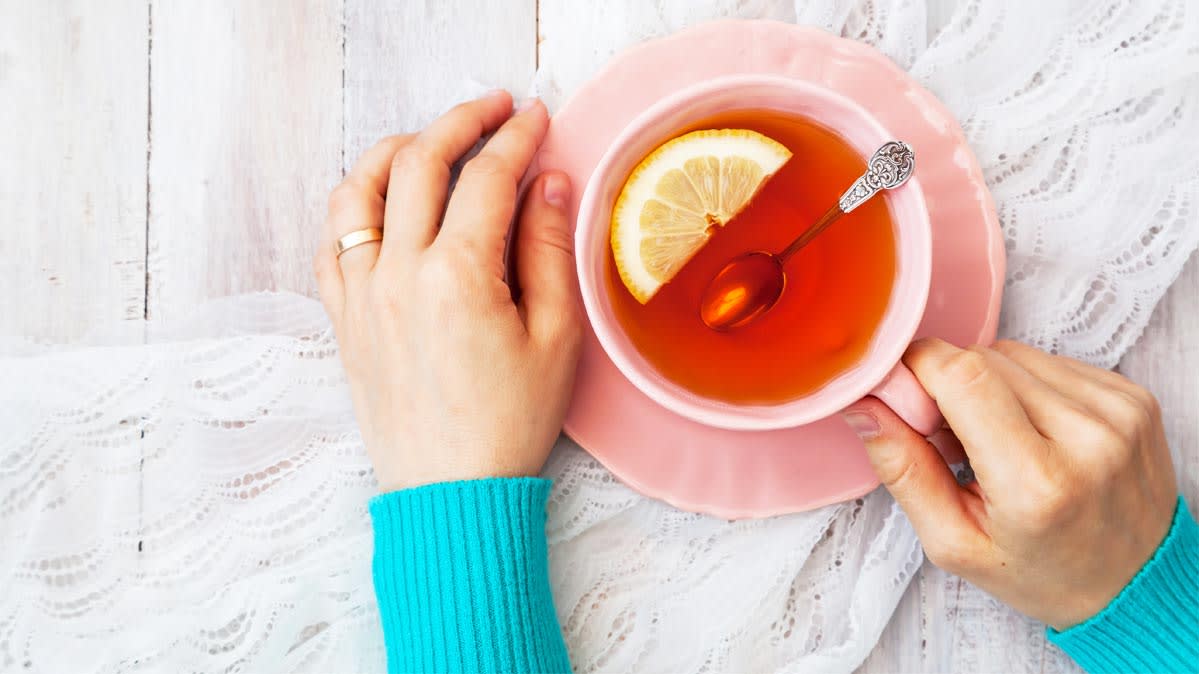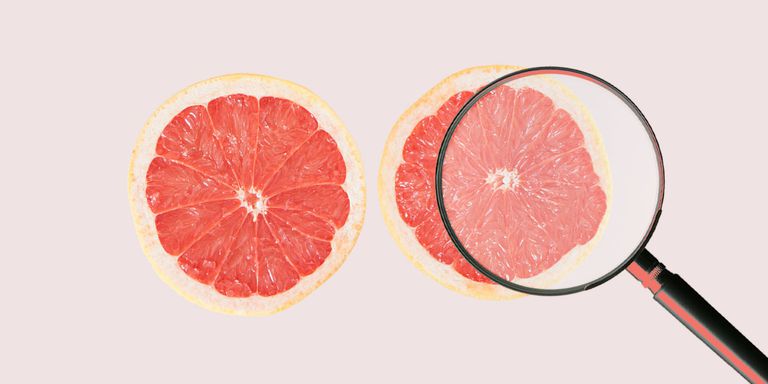|
Mom, dad, grandma and grandpa who were our superheroes and superwomen in our lives suddenly become a burden and an excess baggage that most children are ready to throw away. We hate our grandpa requesting us to read out his passbook account number due to his ageing vision, we dread our grandma starting tales of her younger life time and again and pray that our parents don’t ask us to spend a weekend together with them trying to relive olden golden days. A hearty welcome to all of you who have either been accepting this nodding your heads vigorously or dismissing all/any of these with a broken heart. Today is International Day of Older Persons-a great opportunity to correct our harsh attitudes towards the ageing generation and surround them with warmth and regards. There are more than 700 million people over the age of 60 living across the world most of them suffering from physical pain, emotional trauma or both together. Time is not far away (estimated to be 2050) when more than 20% of the world’s population would be those above the age of 60. Developing countries face maximum growth in the number of elderly persons with Asia topping the charts. International Day of Older Persons United Nations started embracing a day to celebrate the existence of the elderly population in the 1990 and ever since that, Oct 1st is designated as the International Day of Older Persons. The theme for 2018 is “Celebrating Older Human Rights Champions” and this theme aims at glorifying our older heroes who dedicate their lives trying to improve human rights. This is a day to stand against ageism and bring about a social change in the society to make this world a better and comforting place to people across age groups. This also gives us an opportunity to reflect on the complications and struggles of ageing in today’s world. The World Health Organization (WHO) defines ageism as the stereotyping, prejudice and discrimination towards people on the basis of age. It can also be termed as ‘age discrimination’ when someone treats you unfairly because of your age. Highly prevalent among societies, ageism is largely accepted and remains unchallenged (unlike racism or sexism) as people subconsciously accept it and move on. It would be better if we remember that aged people love to grow home in the comforts of their home rather than being shifted to community centers. Ageism, its disadvantages and the society’s view are clearly elaborated in the website www.firsteatright.com.  Grandchildren are a Ray of Sunshine in a Grandparent's Life Grandchildren are a Ray of Sunshine in a Grandparent's Life Older people are an asset to this world. Their value-system, experience, versatility and wisdom are unmatchable attributes that help in guiding the younger generation. But, to use these attributes efficiently we must ensure to take good care of their health, both emotional and physical. Healthcare facilities in every country are obliged to offer excellent facilities to our older generation. These people are generally prone to communicable diseases but also suffer from non-availability of health insurance coverage which makes the younger generation treat them as a burden in life. Governments are also responsible for establishing suitable healthcare facilities and policies to keep the elderly generation healthy and able. Individuals too are equally responsible for taking good care of their aged parents, attend to their requirements and make them as comfortable as possible with the resources available. After all, didn’t our mom and dad sacrifice their needs to satisfy our desires? Please think over it, reconcile your views on their inabilities and treat them as your children in their old age. Give back your precious time and efforts to bring about a smile on their face, eat meals together, take your ageing parents on a holy trip, allow them to play freely with your children without imposing a list of do’s and don’ts (after all, what harm does a little pampering cause anyways) and above all, pamper them with abundant love and affection. Us this day as an opportunity to correct your attitude and thank your elderly population for all they have done. 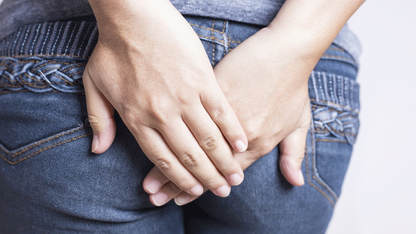 Each of us Fart Between 5 and 15 Times Each of us Fart Between 5 and 15 Times The roaring thunderous noise alighted from one corner of the classroom and the entire bunch of students started to laugh uncontrollably at one individual. You guessed it right-he farted! History has always used flatulence/farting as a piece of comedy or as a representation of humor in books and magazines. Flatulence is normal, common and nothing to worry about mostly. Farting Flatulence, farting or wind is the act of passing gas from the digestive system through the anus. We do pass gas through the mouth, but this is called as burping or belching. While we think than flatulence is rare or confined to certain individuals, the truth is that everyone has gas and most of us pass gas between 5 and 15 times daily. It is something regularly experienced by everyone with only numbers, characteristics and intensity varying from individual to individual. The word is derived from the Latin word ‘flatus’ meaning a blowing or breaking wind and there is an entire area of study dedicated for this known as flatology. While it is common for individuals to fart, it varies from individual to individual in terms of volume and frequency and smell that can vary in concentration depending on the individual. Some people pass gas which goes unnoticed or pass healthy gas that is harmless without odor. Although purely biological, this process is often laughed at which can make the person feel embarrassed and guilty when he/she is present among others. Lifestyle changes, diet modifications and exercise can control flatulence. Science of Farting Along with the food, water and saliva that we swallow, we also gulp in small quantities of air that gets accumulated in the digestive tract. Trying to digest food can sometimes cause gases to build up and our body struggles for a way out to expel these unnecessary air and gas. Farting or belching is the answer to our struggle. Hydrogen, methane and carbon dioxide are the main gases released during digestion that cause no odor. Most of the time we don’t realize passing wind as these gases are mostly odorless and released in small quantities. But sometimes, there is a bad smell due to the presence of gases such as Sulphur that crop up when we eat foods that are difficult to digest. The excess smell might also indicate an underlying health condition or might be the side effect of medications such as non-steroidal anti-inflammatory drugs (NSAIDS), laxatives, antifungal medicines and statins. Some Do’s and Don’ts to prevent the occurrence of excessive or smelly fart include: Do
When we say that certain foods can enhance farting, there must be a solid reason behind this. Closely observing these foods shows that foods causing flatulence are usually those high in certain polysaccharides (especially oligosaccharides) such as inulin. Examples of such foods include:
Lactose intolerance: When people with lactose intolerance consume milk or other dairy products that contain lactose but lack the enzyme to break it down, the bacteria feed on the lactose. This can lead to gas production in these people. Artificial sweeteners: Sorbitol and similar sweeteners are found in candies, chewing gums and other sugar-free sweets which can cause some people to develop diarrhea, gas or both. Fizzy drinks: Carbonated drinks and soda can cause a build up of gas in the intestinal tract. Farting Due to Health Conditions Certain health conditions that can cause flatulence include:
Changing your lifestyle and eating healthy food can help in controlling flatulence but it is better to visit a GP if you lose weight without any reason, notice bloody stools, repeatedly get constipation or diarrhea or have constant stomach ache/bloating. The GP might suggest charcoal tablets or clothing containing activated charcoal to reduce the effects of foul smell released during flatulence. The charcoal tablets are suitable only if the individual does not consume any other medication as charcoal has the tendency to absorb the medication and make it less effective. Probiotics might also be prescribed to reduce flatulence as the friendly bacteria aid in digestion and reduce the symptoms of farting. Cardiovascular disease is the world’s No.1 killer today taking lives of more than 17.9 million people amounting to 31% of all global deaths (WHO). Our heart is where our life is. Any problems to the heart and our life is doomed. One might go heartbroken over relationships which can be mended to a certain extent but suffering from a troubled heart due to diseases and health conditions puts a person’s whole life at risk.
Noncommunicable diseases (NCDs) are those that are not the result of an infectious agent but long-term chronic diseases that are the result of genetics, physiological, environmental and behavioral factors. Cardiovascular diseases (CVDs), cancers and diabetes are all NCDs, but CVDs top the list accounting for nearly half of all NCD deaths. Taking all these into concern, in the year 2012 countries across the world decided to slash down mortality rated from NCDs by 25% by 2025. World Heart Day The World Heart Federation (WHF) created the World Heart Day in the year 2000 with the aim of creating awareness among people about the grueling effects of CVD, its heavy toll on human life and suggesting various changes that every individual can implement in his/her life to avoid/control CVD. Various banners, posters, leaflets, logos and guidelines are distributed, events are organized and landmark buildings are flashed with red light to highlight the importance of this day. Families, individuals, communities and governments participate in these campaigns uniting as one world fighting against the deadly effects of CVD inspiring each individual to take a step forward towards better heart-healthy lives. Decrease Intake of Certain Foods, Increase Longevity This World Heart Day, why don’t all of us make a promise to live a heart-healthy life? The WHF lays down a simple promise…for My Heart, for Your Heart, for All Our Hearts. Use this day as an opportunity to start cooking healthy food, eating nutritiously, staying active, helping children to play outdoors frequently, quitting smoking and helping your loved ones too quit smoking.
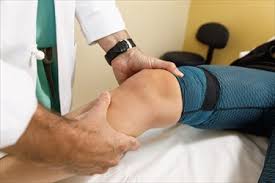 Physiotherapy is the Best Long-term Solution Physiotherapy is the Best Long-term Solution Knees are pivotal for balancing our entire body in a stable way and is a joint that causes problems/pain in most people, especially the female population. All of us experience knee problems sometime in life and most of these problems are due to everyday wear and tear, overuse or injury which happen mostly due to recreational activities, work-related tasks or home projects. In general, knee buckling is a problem that can strike anyone at any age. Knee Buckling Knee buckling is when one or both of your knees give away when you try to bear weight on your legs. Also called as knee instability or weak knees, it can be accompanied by pain, but this is not mandatory. Most individuals would have experienced this once or twice in life, but it could be due to some other reason, maybe you just tumbled over! When it does happen frequently, it becomes a case of serious concern. Know Your Knees Our knee is the largest joint in the body and this makes us even more responsible for safeguarding it nicely! But often our knees succumb to too much body weight due to obesity/overweight and give away. Staying on a healthy weight is essential to maintain overall health and it is high time to get in touch with an RDN at www.firsteatright.com to lose weight. The knee connects the thighs and the legs and consists of two joints. It also has 4 bones-the femur, tibia, fibula and patella-all of which are functional in the knee joint except the fibula. One knee joint (tibiofemoral joint) is present between the tibia and femora while the other joint (patellofemoral joint) is present between the femur and patella. The femur is the longest and strongest bone in the human body. The upper and lower bones of the knees are separated by two discs called menisci. These menisci consist of connective tissue with extensive collagen fiber containing cartilage-like cells. There are also tendons (these connect leg muscles to knee bones), ligaments (connect knee bones together) and muscles connecting the upper leg bone (femur) and the lower leg bones (tibia and fibula). Cartilages are elastic tissues that help the joints slide smoothly over each other and pave way for flexible knee movement. The bone surfaces inside the knee joint is covered by cartilage which ensure these functionalities (flexible movement and shock absorption). Causes While a knee problem is mostly due to an injury, there might also be other reasons such as job, sports and recreation activities, old age or the presence of diseases such as osteoporosis and arthritis that increase your probability of a knee injury. Most individuals too associate knee buckling with osteoarthritis but there is a study which disproves this! This study showed that more than 50% of the people complaining of knee buckling did not show any signs of arthritis in the X-rays. Knee consists of joints, tendons, ligaments, bones and muscles, each doing different functions to enable proper functioning of our knee joint. Damage to any of these parts or a combination of both, an injury and damage to any of these parts can cause knee buckling. Other important factors that contribute towards knee damage include:
Exercise is the main treatment offered for knee buckling. Specific exercises help to strengthen the leg muscles, improve knee stability and provide flexibility, all of which help to minimize/prevent knee buckling. A physical therapist devices certain sets of exercises depending on the person’s problem. While the therapy can be for anywhere from 1-4 weeks, patients are recommended to continue all exercise henceforth to prevent further pain and problems. Initially, the patients might find it difficult to follow these exercises, but slowly build up strength and flexibility in their legs and knees. Instead of doing this, some people start limiting their activities, reduce their walk timings, go out less-often and even stop doing physical activity which can lead to even more damage. Other treatment options include rest, compression, ultrasound, support in the form of braces, bandages and tapes, medications or surgery. Changing your lifestyle for the better such as losing excess weight, avoiding stairs and making use of lifts, ramps and escalators and making use of canes to assist walking can also help individuals go easy with knee buckling. It is better to meet a physician if you experience pain, swelling in the knees for more than a couple of days, walking difficulty, clicking sound with pain, fever or limitations in your routine activities along with knee buckling. India Bears the Brunt of Rabies Since Time Immemorial  The World Aims at 0 Deaths by 2030 due to Rabies The World Aims at 0 Deaths by 2030 due to Rabies Not a day passes by in our lives without fearing the bite of street dogs. I might be one of the many individuals who avoids walking on the streets and sticks to parks/building lawn area to run or jog fearing these canine ammals . There are reports of dog bites and deaths every day in newspapers but what we do is read the article, feel sorry for the victim for a few seconds and move on to the entertainment section. But why bother when its not us or any of our family members! Such carelessness, failure to report dog bite incidents or avoidance of precautionary measures have left us with one death every 15 minutes due to rabies! Rabies Rabies is a zoonotic disease caused by the rabies virus. Though we commonly associate it with dogs, it can happen in wild animals including bats and foxes, dogs, cats and farm animals. Its passed on to individuals from the bite of an infected animal. The virus enters humans either via infected saliva from the animal into the wound of humans or through direct exposure of mucosal surface to the infected animal’s saliva. Once the virus enters the human body and reaches the brain it starts replicating and the individual starts showing signs of the disease. Hallucination, fever, headache, fatigue, confusion and paralysis are common symptoms and the presence of these confirms the fatality risk involved. The affected individual must seek immediate medical attention. A couple of shots can prevent rabies in people exposed to the virus. Rabies is universally present across all countries worldwide with the exception of Antarctica. Although 100% preventable through vaccination, there are more than 59,000 people who succumb to death due to rabies 99% of which are dog-mediated. Among these deaths 95% of them are from the Asian and African sub-continents. World Rabies Day Started in 2007, World Rabies Day is celebrated each year to raise awareness about the disease which is 100% preventable yet causing thousands of deaths globally. This date seems perfect for celebration as it marks the anniversary of Louis Pasteur’s death-the proud inventor of the first rabies vaccine. Vaccination is a sure-shot way of curbing certain diseases and for more information on this, please visit the website www.firsteatright.com. The theme for 2018 is Rabies: Share the message. Save a life. 2030 is the deadline for eradicating this disease and this year’s theme can be used to effectively spread the message to governments to take steps to go by their deadlines as well as to people urging them to vaccinate their dogs, treat bite wounds and teach children to avoid dog bites as more than 50% of victims in the Asian and African countries are children under the age of 15. Prevention India accounts for almost 60% of rabies deaths in Asia and 36% of deaths globally. Lack of coordination and proper programs are the core reasons for such widespread attack of the disease. There are certain precautionary actions that can be taken to protect ourselves from the disease.
Visuals impact more than anything else. Seeing a child vomiting, having high fever, bleeding badly, bad injuries, diarrhoea or cough immediately makes us panic and visit the physician fearing something serious. At the same time, parents don’t find it essential to consider a few other symptoms as important or more important than the ones mentioned above. This is terrorizing and deadly as these are the ones that can cause devastating results:
Lethargy: Don’t equate lethargy to laziness! Having a lazy child sleeping on the couch is not the matter of concern here! This is sheer sluggishness that needs a bit of jostling to bring your kid back on track for which one can always make use of www.firsteatright.com. Lethargy is showing signs of sleepiness that is strange. Sick people sleep more due to antibiotic effect of medicines, tiredness or weakness. But, when a child wants to do nothing but sleep, finds it difficult to wake up from sleep or stay awake after getting up, these are never ok. Some children feel like lying down and doing nothing even when they are awake. Children who cannot sit up, walk around, interact or play must need immediate attention. A physician would be the right person to find out if lethargy is due to dehydration, infections, bad bumps in the head, chemical imbalances or toxins. Constant pain & irritation: Sickness can make a person irritable and suffer from pain. Medications can diminish these feelings and make the child feel better. Pain and irritability come and go but when they don’t seem to vanish, it’s a matter of concern. When infants don’t want to eat or drink anything, don’t settle down for any distractions or cannot sleep, these are signs of some illness that needs to be conveyed to the paediatrician immediately. It’s the same when pain or discomfort in older kids don’t go away in sometime too. Breathing trouble: If you are surprised by this symptom, especially when you think that every parent would surely recognize breathing problems, there are some instances that don’t turn out to be as blatant as you thought. Such situations include:
Some children become normal and brighten upon entering the physician’s place and this embarrasses the parent many a time. Its completely normal for such peculiar episodes to take place and never repent for this. It is better to be silly now than sorry later! ‘Add colors to life’ does have a strong meaning but what about ‘add colors to rice?’ We started with white rice, proceeded to brown and yellowish rice and now landed up with red yeast rice. Every time a new rice variant enters the market, there are various pros and cons about it, newspaper and magazines either boost or attack the new variant and ultimately, the frenzy surrounding it dies in sometime. But the buildup lingers until every soul is aware of the latest launch in the market!
Red Yeast Rice Red yeast rice is an ancient Chinese culinary and medicinal product now used by people across all countries worldwide. This has lured the attention of people because it is claimed to be a ‘natural’ product used for lowering cholesterol levels but there are not many studies supporting its long-term safety and efficiency. Various types of the extract are sold as supplements but the effect of these on our system is not yet clear. Red yeast rice is produced by culturing rice with different strains of the yeast Monascus purpureus and red yeast rice extract is a substance procured from this rice. RTRE contains various ingredients that help to control cholesterol levels and the most conspicuous among them are monacolins, specifically monacolin K. Monacolin K is chemically identical to the active ingredient present in the drug lovastatin. Lovastatin is a cholesterol-lowering drug belonging to the statin drug family. The main role of these drugs is to lower cholesterol levels by suppressing their production in the liver. The primary reason why these drugs are not approved as cholesterol-lowering agents formally is primarily because the ingredients present in different brands of the rice extract vary vastly. Composition of the product differs depending on the culture conditions and the strain of Monascus used to produce the extract. Also, the conditions under which culinary red yeast rice is produced is completely different from the conditions and strains used to manufacture products useful in lowering cholesterol levels. FDA tests do confirm this as strains of red yeast rice manufactured for culinary use contain none or only traces of monacolin K. Going by Science Using red yeast rice products that contained substantial amounts of monacolin K on individuals participating in clinical trials resulted in reduced total and LDL cholesterol levels in them. Studies in USA indicate that using around 2.4 gm/day of RDRE reduces total cholesterol levels by as much as 20-25%. Another study in China on 5000 participants who took the extract twice a day for five years showed that these individuals were 30-33% less likely to die from coronary artery disease or heart attack. Whereas using extracts that contain little or no monacolin K may have no impact on the study participants. There are even studies which show that people intolerant towards statin drugs owing to side effects (weakness and muscle pain) were tolerant towards red yeast rice. This might be due to difference in monacolin K quantity in the two products (rice extract comparatively contains decreased amount). What are Supplements without Side Effects?
The best way to lower your cholesterol levels is naturally through a healthy diet, an active lifestyle and regular exercise. Losing excess weight, avoiding smoking and exercising regularly helps to increase HDL cholesterol levels. Meeting a registered dietitian nutritionist at www.firsteatright.com can help you in your weight loss journey and guide you to eat the right kind of foods. Despite all these efforts if you still require medications to lower cholesterol, it is advisable to take medications as you are aware of the quantity of active ingredients in the pill and also their potential side effects and risk factors. Nutrition is a simple word that performs complex functionalities-it adds quality and quantity to life! Hunger can make one ‘hangry’ (anger when hungry) and make one wonder if it is us who acts in such a way. Hangry/hanger is an often-witnessed phenomenon these days that can make the individual and those around him/her unhappy. Read more on ‘hanger’ at www.firsteatright.com. All of us are aware that we find it difficult to focus on some class, meeting or job when we are hungry. There are even researches and evidences that support the fact that hungry children don’t show much focus, have decreased attention span, face behavioral issues and are subjected to disciplinary actions whereas, well-fed children excel in their performance and make a well-established difference in contributing to or disrupting the classroom situation. Hunger is simply not the result of refraining from eating but can be due to even-more bigger concerns such as poverty, accessibility and nutrition that are complex and interconnected. Spreading nutrition through schools is effective and a sure way to success as children spend more than 900 hours per year in school, curriculum for health include nutrition and physical education and schools reinforce behavior and reach out to most children/adolescents residing in a community. Schools are the best place to show kids what we value as a society and what is important to each of us in our community. Food Insecurity Recent study shows that accessibility to food affects learning in a positive way as early as kindergarten. The study published in the journal Child Development reveals that children who experience food insecurity in early childhood enter kindergarten less ready than their peers who are food-secure. The study compared results of math and reading tests along with children’s skillsets such as curiosity and self-control in both, food-secure and food-insecure, groups which revealed that food insecurity in infancy and toddlerhood proved lower cognitive and socio-economic skills in kindergarten. Remember, hunger and food insecurity are two different aspects. While the first one is a physical experience the second one is a psychological experience. Children are malleable during early years and these lay the foundations for their long-term growth and success. Helping children overcome food insecurity and promoting nutrition can help kids in multiple ways-physical, psychological and behavioral.  Sharpen Skills with Classroom-based Activities Sharpen Skills with Classroom-based Activities School-based Programs & Their Impact
Nutrition can affect brain functioning: Numerous studies reinforce this fact and prove that nutrition affects mental capacity among school-aged children. For instance:
Each student is blessed with the capacity and potential to exceed in academics and do well at school. Improving diet quality helps to improve health and learning outcomes whereas, failing to provide our kids with a proper nutritional balance puts them at risk for missing out on meeting the necessary outcomes. Schools that provide breakfast and snacks should also plan smart meal menus that attract kids yet are replete with nutrition content. Experiencing one of those summertime? Don’t worry! Rev up with these mood-enhancing foods that can clear your blues away and set you free! While there is no specific diet that can clear depression, eating the following foods can keep you in better mood and also add good health to your body.
Eat oatmeal for breakfast (in fact, for any meal of the day) Oatmeal contains healthy carbohydrates that stimulate release of the ‘fell-good’ hormone serotonin. This hormone is a neurotransmitter that decreases appetite, puts off pain and induces sleep. Oatmeal contains abundant fiber that makes a person feel full for longer time periods, slows digestion and releases energy gradually enabling ‘mood boost’. Brown rice, whole grains, berries and fruits too give you similar results. Garner Vitamin D The sunshine vitamin (as popularly called) has become difficult to procure as it is rarely present in foods naturally. Research proves that people with lower vitamin D levels have higher rates of depression. Sun is the best source of this nutrient as exposure to sunlight helps the body convert natural sun rays to vitamin D. But prolonged exposure is not recommended due to the increasing number of skin cancer cases. Try accumulating generous amounts of vitamin D through:
Here again, individuals with lower omega-3s are at an increased risk of depression. Keep emotional turmoil at bay by consuming omega-3-rich foods such as:
Fruits and vegetables are the anchors of good health and each of us should eat at least 5 portions of fruits and veggies daily. Know more on the benefits of eating rainbow-colored produce from the website www.firsteatright.com. Depressed people often lack folic acid in their body, a nutrient that is required to produce the feel-good hormone serotonin from tryptophan present in foods. Fill your plate with juicy carrots, ripe tomatoes, green broccolis, tiny snow peas, catchy oranges and mouth-watering berries. Drink some hot green tea with honey 45 minutes before bedtime for a good night’s rest and reduced irritability Nothing can beat the goodness of a good night’s rest which calms your body and rests your mind. Tea helps you calm down with its amino acid theanine some 20 minutes after consumption. Carbs in honey release serotonin and the sweet effect of honey makes you feel that you are not deprived of your foods and hence, keeps you in good mood. Honey also releases the hormone melatonin that plays a major role in recovery and rebuilding of body tissues during sleep. People keep talking about obesity every single day, media reports epidemic rise in obesity rates and physicians warn patients against the side effects of obesity. It would be good if all of us talked about solving undernutrition just as much as we discuss about obesity. Macronutrients (carbohydrates, fats and protein) are always in discussion and their deficiency is prominently visible amongst people. But do you know that there are more than two billion people worldwide who do not get enough micronutrients like iron and vitamin A which can lead to long-term health consequences? We cannot totally play blame games regarding micronutrient deficiencies-there is progress made worldwide to reduce these, but further quick actions and steps must be taken to reduce and ultimately, eliminate undernourishment in sometime. Malnutrition is as evil as obesity and to know more about it, please visit the website www.firsteatright.com.
Micronutrients are our vitamins and minerals that are critical for development, disease prevention and wellbeing. These are not produced by our body and must be supplemented from the foods we eat. More than 50% of the child population (between 6 months and 5 years) suffers from at least one of the micronutrient deficiencies. Most common micronutrient deficiencies found in children are iron, zinc, vitamin A and iodine. We might say that developing countries are the ones extremely affect by micronutrient malnutrition, but sadly even the developed countries suffer from various forms of these nutritional problems. Iron Iron deficiency is the most common nutritional disorder worldwide. Over 2 billion people (more than 30% of the world population) are anemic globally making it a public health concern of epidemic proportion. Almost 20% maternal deaths are due to anemia, leads to poor pregnancy outcome, stunted cognitive and physical development, increased morbidity risk in children and decreased work productivity in adults. Vitamin A Globally, 1 in 3 pre-school aged children and 1 in 6 pregnant women are deficient in vitamin A which is extremely vital for healthy eyesight and immune system functioning. Supplementing small children aged between 6 months and 60 months is helpful in decreasing mortality rates across countries. Otherwise, these children are at a high risk of blindness and death from infections such as measles and diarrhea. Zinc Zinc boosts immunity, resists infections, helps in healthy pregnancy outcomes and facilitates proper growth and development. Almost 17.3%-30% of the world’s population lacks adequate zinc levels due to insufficient dietary intake of this mineral. Newborn babies and small children are given zinc supplements to minimize incidence of premature birth, childhood diarrhea, respiratory infections and support improved growth and weight gain among infants and young children. Iodine Iodine is imperative for brain development of the fetus absence of which leads to more than 18 million babies born with mental impairments and more than 2 billion people having insufficient iodine intake. Iron fortification in salt is an excellent nutritional introduction and almost 71% households have access to iodized salt. This enables increased IQ levels among children and also prevents iodine deficiency disorders such as goiters. Impact of Micronutrient Malnutrition Ultimate side effect is the loss of 100% use of human potential due to increased rates of illness and disability and decreased work capability. Learning ability sees a downslide and children are even subjected to stunted mental capability. All these can be countered by using four effective strategies:
 Exclusive Sand Play Periods are Part of the School Curriculum Exclusive Sand Play Periods are Part of the School Curriculum “Bits of paper, Bits of paper lying on the ground, lying on the ground Makes the place untidy, makes the place untidy Pick them up, pick them up” This rhyme might not go well with infants and toddlers today, at least not among those kids belonging to affluential families! A new study shows that children exposed to infections following germ-free childhoods are at a greater risk of childhood leukemia. A research scientist spent decades together trying to analyze the reason behind childhood leukemia and came up with a multi-step process:
ALL is the commonest form of childhood leukemia (blood cancer) affecting blood-producing cells in the bone marrow. These cells multiply rapidly and don’t mature fully resulting in ALL. It is diagnosed in children between 0 (meaning newborns) and 4 years but the number of cases occurring yearly are still rare. It is essential to diagnose and treat the disease immediately otherwise it can become fatal. The disease spreads rapidly in a few days or weeks’ time accumulating in the blood and flowing to other parts of the body such as the nervous system, lymph nodes and liver. Fortunately, 90% of those affected can be treated and cured with chemotherapy. The researcher involved in the study came up with definite conclusions that ‘delayed infection’ was the primary cause ALL. Infections in the early stages of development aid the immune system in reducing the frequency of illnesses but absence of infections during these stages set the doors for leukemia wide open. If a child’s immune system is well-utilized during the first year of life in protecting against infections by exposing the child to normal environments, the child is protected and spared of problems such as ALL, allergies or other diseases as well as free of trauma and side effects. Our immune system is a vast ocean to be explored and one can find many interesting facts on this by visiting the website www.firsteatright.com. A host of evidences that point to the conclusion of the study include:
The study’s main motive was not to blame parents for nurturing children in germ-resistant environments but to find the actual culprit behind ALL. As a society, we are moving towards development, modernization and evolving to be a sci-tech world. Maybe, ALL and other such illnesses are the price we pay for the progress made in the medical field as well as the path our society has chosen to pursue. Each of us have a vague idea on how royals nurture kids or at least we imagine the different ways. Most of us would have immediately thought about kings, presidents and the most affluential class of people and their children who are nurtured in such specific kinds of environments that cater to their whims and fancies. If a royal kid wants to fish in a pond, an artificial pond is created; most rich people opt for home schooling and hence, once again the kid is isolated from other kids of their age. So, do many of these children develop ALL due to such restricted environments? This remains a question that needs to be answered! Even common people have become finicky about their choices. They insist their children to mingle with only some groups of children, go for branded things and choose schools/daycares that are luxurious and over-hygienic. Money matters here and as most households have both parents working, individuals don’t mind shelling out as much money as they wish to. Such is the way in which our societies function and this is also a reason for innumerable diseases to show their presence. Meanwhile, the study does not request parents to make their children roll in mud and play with worms! Allow kids to live normally. Expose them to the natural environment of mud, dirt, insects and friends. If a child falls down on the mud from a jula, help him/her wash herself and clean up. Don’t run and warn him/her to never play on the swing next time. Schools nowadays have an exclusive period allocated for sand play. This allows children to mingle freely, helps them feel the earthly presence and fall in love with nature. All these might seem trivial but who knows what might come of use at any point in life. Playing in the dirt or exposure to daycare might not prevent a child from acquiring ALL. Even if the study shows so, evidences are not totally conclusive and further analysis is definitely required. It might be a genetic mutation in the womb that none can be blamed of. But one thing parents must be assured is the fact that if your child had/has leukemia you are not to blame yourself in any way as there is nothing solid known until now that can prevent the occurrence of the illness.  Stress in Life Can Trigger Haphazard Menstrual Cycles Stress in Life Can Trigger Haphazard Menstrual Cycles Women are blessed to give birth to children and at the same time experience their share of mood swings, cramps and uneasy times during menstrual cycle every month. What if I told you some women get to experience these twice a month? The Normal Cycle Any girl child is ready for menstruation from the age of 10 but the average age of onset is around 12 years. The duration of the menstrual cycle varies from woman to woman, but the average is to have periods every 28 days. It is also common for any woman to experience cycles that last anywhere from 20 to 40 days. The menstrual cycle dances to the tune of the hormones. When hormone production is normal and adequate, menstrual cycles cause no problem and occur regularly. Any imbalance in these hormones is the root cause of most menstrual cycle-related problems such as missed periods, two periods in a month, heavy bleeding and so on. During each menstrual cycle, rising estrogen levels cause the ovary to release an egg. The womb lining also starts to thicken. During the second half of the cycle, progesterone hormone helps the womb prepare for implantation of a developing embryo. The released egg travels down the fallopian tubes (2 tubes that connect the ovaries to the womb) and when there is no chance of pregnancy, the egg gets pulled back into the body. Estrogen and progesterone levels fall, the womb lining comes away and is expelled out of the body as a period. Any period can last between 2 and 7 days during which women lose around 3-5 tablespoon of blood. The length of the cycle varies depending on many other factors such as stress, emotional imbalance, fluctuating weights, extreme physical activity and travelling. Irregular Bleeding Menstrual cycles last anywhere between 3 and 7 days. Women who get a shorter cycle can get their period at the beginning or end of month and this is normal. But, if the same woman bleeds outside her normal menstrual cycle or suspects the occurrence of a second period, it is wise to first figure out if it is spotting or menstrual bleeding. Once sure about this, it is better to meet your doctor and figure out what is causing this kind of bleeding/spotting between periods. Several underlying reasons exist for periods that occur twice in a month: Out of the blue: Rarely, the person might experience short menstrual cycles that occur twice a month. But once done, the periods might return to normalcy and cycles become regular. Due to reasons such as these, the physician investigates the bleeding pattern frequency before suggesting any treatment or making a diagnosis. Age: Menstrual cycles mostly take time to become regular. Some girls get their first menstrual cycle after which they don’t menstruate for a couple of months. Sometime later, the bleeding again starts to occur. Puberty too can cause shorter or longer menstrual cycles which can lead to two cycles in a month. Research even suggests that it can almost take 6 years from the onset of the first period for the menstrual cycles to become regular. Perimenopause: This stage starts several years before menopause when ovaries begin to make less and less of estrogen and lasts up to menopause. It usually lasts for some 10 years during which individuals experience skipped cycles, irregular menstrual cycles, shorter or longer cycles or experience light or heavy bleeding. Any person who misses her periods for twelve consecutive months is said to have entered menopause. Endometriosis: This is a condition where a tissue similar to the uterine tissue grows in any other part of the body. Symptoms include irregular bleeding, abdominal pain and abnormal cramping. The bleeding is so heavy that some people mistake it for another period cycle. Although a pelvic exam or ultrasound can help in diagnosis, a laparoscopy is the definite way to diagnose the condition. Thyroid problems: Irregular menstrual cycles are one of the most common symptoms of a thyroid problem, underactive or overactive. Uterine fibroids: These are mostly non-cancerous growths in the uterus that can cause bleeding, especially heavy bleeding. Other common symptoms include pain during sex, low back pain, urge to urinate frequently and pressure or a felling of fullness in the pelvis. This is hereditary, but the cause is unknown. A pelvic exam or ultrasound can help in diagnosis. Stress, birth control pills, extreme weight loss/gain and illnesses are other common reasons for repeated menstrual cycles. Genetic history of cysts, fibroids or early menopause onset can also increase your risk of having two periods in a month. Time to Visit Your Doc! Any person who experiences two periods a month continuously for 2-3 months should meet a doctor. Other common factors that suggests that you visit your doctor include:
Treatment Treatment depends on the cause of the disease. Individuals who have just started menstruating or those who experience shorter cycles need not seek treatment. If you are worried about anemia, your physician might recommend iron supplements. Hormonal birth control is a suggested treatment option for individuals who experience heavy bleeding. This helps to regulate periods as well as resolve anemia issues caused by heavy bleeding.
 Attune Kids to Non-food Rewards During Emotional Distress Attune Kids to Non-food Rewards During Emotional Distress The only way to soothe a crying/irritated child is to buy him/her candies and potato wafers, at least for most of us. On a visit to the pediatrician for vaccination, pop comes out a candy; a few days before a stage performance and the child gets to choose/order his/her favorite snacks as a bribe to perform well; to study continuously and score good marks during aptitude tests or examinations yet again the kid is pampered with all sorts of junk foods and the list goes on forever. Cuddle Up Buddy, Eat All You Want Parents are committing a grave mistake by pacifying kids with their favorite foods during every such occasion. On one side we teach our children to eat healthy foods such as fruits and vegetables and on the other side we become sources of all the unwanted junk food in life only because we want to get things done from them. As a society, we have unleashed gender-bias, at least to a certain extent, and evolved into a more liberal one where we see both parents working in most families, guys taking up household work and more. To accommodate this, children are put into daycares, caretakers are appointed at home or kids are left to stay by themselves at home, once they grow up to be 8 or 10 years. Mom and dad don’t spend quality time with their little ones and compensate for this by spoiling them with all materialistic things that the child wants along with all sorts of processed foods. For instance, mom comes an hour late from office and the child is upset. But, as soon as she unwraps a MacDonald’s burger, the child’s face blooms up instantly. When dad misses out on a school function, he either offers some extra cash as pocket money or orders for a chicken tub from KFC to brighten up his son/daughter. By doing such things apart from solving the problem at hand instantly, we are upbringing a generation of emotional eaters who start delving on food to satisfy emotional hunger rather than physical hunger. A University College London (UCL)-based study has come to a strong conclusion that home environment played the primary role in triggering emotional eating in children. Parents abstain from unraveling positive strategies to regulate their children’s emotions and are re-creating unhealthy parenting norms by using food. Such practices threated a child’s health as it poses a major risk factor for the development of obesity. Also, such emotional over- or under-eating can prove to be important causes for the development of eating disorders such as anorexia nervosa or binge-eating disorder. Anorexia nervosa and binge-eating are becoming more prevalent worldwide due to peer pressure and societal influence to stay slim and look young forever. Read more about these eating problems and ways to deal with it from the website www.firsteatright.com. Study Cases The UCL study looked at 398 4-year-old British twins from the previous study, Twins Early Development Study (TEDS). Of the total, 50% twins belonged to obese parents and were at a higher risk of becoming obese themselves while the rest 50% belonged to parents with a healthy weight. Parents were questioned on their child’s eating behavior and asked when their child loved to eat more-when happy, sad or irritable. The researchers compared this data with data of non-identical twins and found meagre difference between the two sets showing that environment had a greater influence on emotional eating than genes. Yet another set of studies discovered a set of eating behavior that was completely gene-influenced. This included speed of eating, how soon a person feels full after eating and the desire to eat simply for pleasure. Yet another study some time back examined emotional feeding and eating in a group of 801 Norwegian 4-year-olds and probing into their habits yet again at the ages of 6, 8 and 10. Parents here too were asked to fill questionnaires asking about their children’s emotional eating and temperaments such as how easily their child got upset or how well they could curb their emotional distress. Results showed that kids of parents who were offered food for comfort at the ages of 4 and 6 were more prone to emotional eating at ages 8 and 10. Almost 65% children in the study group displayed emotional eating and were likelier to offer foods to soothe parents when they were comforted using emotional eating. A Behavior of Generations Although emotional eating is not inherited, the tendency to offer food as a token of appreciation or a as a gesture to soothe the child emotionally could be passed down from one generation to another, according to researchers. They recommend parents to avoid using food as a reward or comfort for their kids. There are much more positive options and strategies that can work wonders. It might be a small chat that you have with your child (maybe you can take her/him to a park or garden and the greenery around automatically calms your kid firstly), a tight hug that can immediately melt away all of your kid’s emotional burdens or taking him/her for a ride. At the same time, researchers feel that parents never own sole responsibility for their children’s eating issues as eating disorders are complex issues that don’t have a sole cause. Even a person’s genes can influence eating disorders and stress/emotional distress might act as a triggering factor. Families often act as pillars of support for those suffering from eating disorders and should never be blamed for ruining a kid’s eating behavior. They need to be fed with the latest information on eating disorders and motivated constantly to support their loved ones. After all, families love it and cherish it when all family members live a healthy, happy and safe life.  Sunny Side Up But Chemicals Down Sunny Side Up But Chemicals Down Sedentary lifestyle, junk foods, alcohol and staying physically inactive contribute towards weight gain. When an individual overcomes all these hurdles, starts tracking calories consumed, exercises daily, cuts down on portion sizes and reads nutrition labels to lose weight, he/she is still missing out on one important factor related to the obesity epidemic-chemicals. PFASs Hijack Weight Loss There is even a reputed study to back the theory that chemicals induce weight gain and this is published in the journal PLOS Medicine. The study found that men and women with high concentrations of man-made chemicals known as PFASs in their blood regained weight rapidly after weight loss. This is the first-of-the-kind study to emphasize the involvement of chemicals from pollutants to interfere with people’s weight loss efforts although there are research material already existing linking these chemicals with cancer, immune dysfunction, high cholesterol, hormone disruption and high cholesterol. The study also showed that higher blood levels of PFASs (obesogens as they disrupt body weight) were linked to decreased resting metabolic rate (RMR) or slower metabolism after weight loss. PFASs are a category of man-made chemicals found in everyday items such as food packaging, nonstick products, adhesives and stain repellant fabrics. The study analyzed over 600 overweight/obese patients fed on four different heart-healthy diets on weight loss over a period of two years. During the first six months the participants lost 6.4 kilograms but gained back 2.7 kg over the remaining 18 months of the study. People who gained the most weight had the highest blood concentration of PFASs (this induced lower RMR) and the link was strongly seen among women. The research proposes that avoiding or restricting PFAS exposure can enable people to maintain a stable body weight after losing some weight, specifically advantageous in the case of women. PFASs Will Linger Around for Another Million Years PFASs are present literally everywhere and inside our bodies too. They prevent egg from sticking to the pan while cooking, keep rain from soaking your jacket during a summer downpour or prevent spilt tea from staining your carpet. They are used in food containers like pizza boxes, microwave popcorn bags and other food packaging options to repel grease. Through these, PFASs enter our body and stay inside. A study confirmed that PFAS was detected in the breast milk, umbilical cord blood or bloodstream of 98% of participants who participated in the research. These chemicals are extremely resilient and potent enough to linger around for millions of years from now. Try reducing PFAS intrusion in your everyday life as much as possible and the following tips might come in as handy aids in this regard: Cupboard: Whatever your end-goal is, eating healthy food or reducing chemical exposure, the process remains the same-eat as much whole, unprocessed foods as possible and limit your packaged food purchases. This way, artificial colors, processed sugars and artificial sweeteners that serve as nutritional obesogens can be avoided. Throwing away processed foods and replacing it with your own freshly prepared foods is a great way to become healthier. Restaurant meal: When you look forward to restaurant take-aways to minimize preparation efforts and save time, you become a prey to phthalates, a group of hormone-disrupting chemicals found in plastics and other products that may be obesogenic. Phthalates are dominantly present in restaurants, fast food joints and cafeteria meals. One study shows that people who consumed meals outside had 35% higher phthalate levels than those people who prepared their own grocery store purchases. Guess what! Sandwiches and burgers purchased from outside contain maximum quantities of these chemicals. Take-away containers: PFASs are not just present at restaurants increasing the body weight of individuals but they are also safely seated in grease-proof containers, paper wrappers and boxes used for packaging foods. Even the microwave popcorn bags are lined with these weight-gain promoting chemicals.
Healthy produce: Any type of produce-fresh, canned, frozen or organic-is healthy but not all of them are obesogens-free. Pesticides dominate agricultural world and it is safer and better to choose organic fruits and vegetables as some of these pesticides are capable of increasing body weight. If you are unable to buy organic versions of all your required produce, have a look at the top 10 dirty vs clean produce at the website www.firsteatright.com and make your choices. Plastic, plastic everywhere: It is almost next to impractical to do away with plastic as they have entered every space of our life-water is drunk using plastic bottles, lunch is packed in Tupperware and snacks are sealed in plastic zip-lock bags. All we can do is take every step possible to limit usage-use glass containers to drink water or carry your own bag on grocery trips. There is also one study that shows that a BPA byproduct can lead cultured cells to become fat cells. Paper receipts: E-receipts, bills, ticketless travel journeys and ATM machines showing balance without processing receipts are all initiatives to work towards paperless transactions that are environmental friendly. You can stop getting your receipts too at the grocery store and opt for e-receipts not only to avoid bills that clutter your purse but to become a part of the eco-friendly initiative. These steps reduce the attack of chemicals including BPA that can be absorbed into the blood through the skin or even through air when touching such receipts. But remember, the foods listed in the receipts shape your health in a far better way than the tiny slip of paper.  Dads are a Boy's First Hero Dads are a Boy's First Hero Children reflect their parent’s thoughts, attitude, characteristics and personality apart from being a mirror image of their parents (mostly). As kids, they might not give heed to our suggestions, advise or interests. But, once they grow up into teenagers, a dad becomes the No.1 inspiration for every son and girls try to duplicate their mom’s every step! Nothing goes down the bin and everything that was inculcated to kids during their childhood years are implemented by them during their teenage years (hopefully 😊). A positive attitude in life goes a long way beyond garnering immediate advantages. It helps to look at the brighter side of things and deal with situations in a cool-headed manner, just like our Captain Cool! A new study done by two reputed Universities reveal that teenagers are less likely to be overweight if their mum or dad had a positive attitude during pregnancy. If you wonder how on earth is positivity linked to obesity, be assured that some miracles do happen! Locus of Control: The Point of Life Control! The study analyzes an unexplored area of personality called as locus of control (LOC). LOC is a psychological measure that can be grouped as external or internal LOC. A person with an internal LOC attributes success to his/her abilities and efforts whereas a person with an external LOC attributes success to luck and fate. People with an external LOC tend to experience much anxiety in life as they believe that all things are not under their control and depend purely on external factors. But, this does not bring us to the conclusion that internal LOC is good for us and external LOC can attract negativity. But it is highly likely that people with an internal LOC tend to be much more success-driven and achieve greater heights in life. The same concept can be applied to health too where individuals with an internal LOC believe that they can improve their health and lifestyle through their own actions. The study looked into answers of more than 7000 parents who took part in the children of the 90s longitudinal study about their personality, mood and attitude during pregnancy. The research team received similar answers from children at age of eight and the child’s fat mass measurement up to the age of 17 was also measured. Using all these data the study group could arrive at the conclusion that a mother’s psychological background during pregnancy is one of the deciding factors that affect teenage weight gain. Teenagers had an excess weight of:
We are well-aware that diet, exercise and a healthy lifestyle goes a great way beyond nutrition and keeps a person fit, strong and in shape. Alarming increase in obesity rates is mainly due to poor diet and lack of exercise in both adults and kids alike. Little do we know about psychological factors that can affect excess weight gain. But, the questionnaires filled by parents and the body measurements available point to an important factor-self-belief-the lack of which can be a great contributing factor for childhood obesity in kids aged 15 years. When a parent lacks belief in his/her ability to influence change by eating healthy, stopping to smoke and breastfeeding baby, the mom involved is refraining from following healthy habits that can affect her body physically and which in turn can affect the kid’s body too physically. This might serve as an important step in understanding the role played by a parents’ locus of control on the child’s ability to develop a healthy lifestyle during the child’s teen years. Our mind can do wonders and the fact remains true. Sages and yogis achieve many things impossible to the common man, move the unmovable and accomplish the unattainable in life using their mind power and control. Curing cancer or treating GERD might be impossible with LOC, but there are other chronic illnesses such as arthritis in which the LOC plays a vital role in adapting to the illness. Get in touch with a registered dietitian nutritionist at www.firsteatright.com to develop a health lifestyle routine for your teenager to prevent him/her from the obesity epidemic. Urinary incontinence is the loss of bladder control leading to unintentional passing of urine. Millions of people experience this problem of which more than 45% are women. These women feel ashamed, embarrassed or uncomfortable talking about this problem with only a few others shooting out their personal experiences openly. Rest of them silently suffer as they are too shy to express it. They even stop going out fearing accidental passing of urine, it affects their sex life and might lead to depression. We can see clearly that urinary incontinence is not just a medical problem but one that affects emotional, psychological and social life of people.
The Process of Urine Flow The urinary tract acts as the body’s drainage system to remove urine which is a combination of wastes and unwanted fluids. Urinary function is the synchronous coordination of brain and bladder. The urine is stored in the bladder until the brain sends a signal to it that you are ready to urinate. After this, the bladder muscles contract and force the urine out of the urethra (this is a tube that carries urine from the body). Types of Urinary Incontinence This problem is of different types: Stress incontinence: Urine leaks when the bladder is under pressure. Coughing, laughing, sneezing, sex, exercises like running and jumping or even sex can cause urine leakage. This is commonly seen in younger women who have given birth vaginally. Stress incontinence is the result of weakening of or damage to the muscles (pelvic floor muscle or urethral sphincter) used to prevent urination. Urge Incontinence: Sometimes, we feel an urge to urinate and during every such feeling, urine leaks immediately or soon after. This is commonly seen in obese/overweight women, women with dementia, stroke or diabetes and is due to the overactivity of the detrusor muscles that control the bladder. Overflow Incontinence: Individuals rarely are unable to fully empty their bladder and this might cause frequent leaks. There is a blockage or obstruction to the bladder that prevents it from emptying fully. Total incontinence: This happens when the bladder can’t store any urine at all and this makes you pass urine constantly or have frequent leaking. This can be due to a bladder problem from birth, a spinal injury or a bladder fistula. Some people have a mix of both, stress and urge urinary incontinence. Common Causes of Urinary Incontinence Certain reasons that increase the chances of urinary incontinence include:
If our daughters were as confident as our sons (comparing itself is a shameful act in the first place as both are equally talented individuals but restricted to different levels of exposure because of which the scenario today compels us to do so!) there would be no place for campaigns such as P&G’s ‘Like a Girl’ and Dove’s ‘Real Beauty Sketches’. These campaigns purely clicked as they harnessed people’s emotions in the right way. P&G’s ‘Like a Girl’ campaign became a viral sensation worldwide as it shed light on sexism and reminded the long-forgotten phrase that being ‘like a girl’ means being fierce and confident-attributes that today’s girls lack notably. The world might hold a modern outlook and girls might feel more independent these days, but can we nurture a Rani Laxmi Bai, a Joan of Arc or a Rosa Parks now? The so-called modern women nowadays lack the courage, confidence and attitude to accomplish many of their dreams that women of previous generations achieved despite their restrictions and a male-dominated society. Choose Your Destiny The world is an open gate and each of us have the right to choose what we want to be-a doctor, pilot, fighter pilot or a teacher. Strangely, girls don’t get the vaguest idea of sex differentiation until the age of 8 after which they start developing inhibitions and lose their confidence as they near puberty. A survey conducted on nearly 1500 girls aged between 8 and 18 years along with their parents showed that confidence levels of these girls dropped by almost 30% and three of every four teens were worried about failing. Adolescent girls experience a colossal physical change as they enter puberty that causes a heavy blow to their confidence levels but aren’t we all something beyond flesh and blood? Our minds are what must rule us and it must never be our body that does the talking. Social media, movies, newspapers and magazines hold a ripe role in confining women to physical attributes and limiting their thoughts to nothing beyond beauty. Try incorporating the suggestions given below to nurture girls into confident women who are empowered with great abilities and bring out the best in themselves. It is always recommended to get our girls out of their comfort zone and help them explore various stuff they have always wished to but have been hesitant to work on. This instills a new confidence in them as they find themselves equipped with the ability to finish tasks that they have been afraid of failing at. Even if they fail initially, it depends on the parent to lift the child’s spirit, confidence and motivation to take up the task again and try completing it. As a parent, you can help your child maintain a list of risks she had taken up and keep track of the ones she had succeeded. This will be a reminder of your daughter’s abilities in times of diminished confidence levels. They can look into their success list and keep boosting their positive vibes to achieve further goals in life. The same can be done in the case of failures too. Parents can sit down with the child and discuss various ways to tackle these failures and this would empower the child with a new level of confidence in life. Parents must constantly remind their children that failure and success are part and parcel of life which none on this earth can avoid. The main solution to this lies in finding the right way to deal with the problem. As a parent, you can rebuild the entire failure program from a different angle and expose it to your child or even try to add a sense of humor to the otherwise grave situation at home. Finding humor in a bad situation, especially when your girl is behaving as though the world had sunk, is not an easy affair but needs quick wit and a super-speed brain. Our daughter’s confidence and strength greatly rely on how strongly mothers deal with struggles and failures in life and don’t mind taking risks. If you, as a mom feels anxious about your forthcoming presentation at office, there is no need to hide your worries. Discuss about them openly with your daughter and figure out a way to overcome them-all of this in front of your daughter. This makes your girl too understand that hurdles are common in life and what matters the most is the way in which we handle them. Parents are any child’s first and best role model. Children mimic parents in many different aspects in life and to realize how strong your actions can influence your child, please visit the website www.firsteatright.com. Above all, every girl needs to be constantly reminded that she is not brought into this earth to please others all the time. Not everyone can be satisfied all the time and girls need to understand this. They must be taught to evolve into citizens who also do things to please themselves. Getting good grades for mom’s sake, being disciplined to please daddy and satisfying your brother’s requirements by making him some coffee/tea is ok. But, also do something to please yourself-maybe spend some time reading your favorite novel or get a new nail paint done.  Kindle the Fighting Instinct in Your Girl! Kindle the Fighting Instinct in Your Girl! Follow Your Instincts Listen to what your daughter has to say. Don’t assume things and pounce onto her right before she speaks up anything. If your daughter is worried about her body image, self-esteem or peer pressure, listen attentively and come up with practical solutions. Each of us have gone through similar phases in life. Try to encourage your girl to be with other girls of her age group and let her do activities that she wants to pursue. If she loves to ride a horse, let her do so. If she is interested in taking up mountaineering, accept her wishes with a warm heart. In fact, you must also encourage your daughter to pursue hobbies such as building a model aircraft, joining bootcamps or trying to row a boat. These might sound strange, but who knows! Maybe your daughter could become the best fighter pilot or a civil engineer someday. The whole point here is that don’t try to curb her interests or divert her attention to something that does not attract her. Accept her as she is, encourage her good things and quietly try to correct her wrongdoings in the best way possible. It just doesn’t happen when you are trying to conceive! You are reminded of the various do’s and don’ts and finally end up doing nothing. Couples nowadays are already stressed enough while trying for a baby and they don’t need anything more to stress them out.
Fertility Factor Increasing number of couples nowadays suffer from infertility issues and almost 50% problems are due to the male population. Experts feel that low sperm count is the primary cause for most of the fertility issues. Blame it on lifestyle, nutrition, diet or other factors but the statistics remain the same and maybe, can only become worse. IVF, IUI or other assisted reproductive techniques (ART) are not the solution for this. These techniques are definitely appreciable and there are no second thoughts on it, but we are also obliged to fulfill whatever is possible from our end to enable natural fertility. Conceive naturally with the help of health, exercise and food tips from the website www.firsteatright.com. A new study by a team of researchers at the Harvard School of Public Health shows that men who more frequently wore boxers had higher sperm concentrations and total sperm counts compared to men who did not wear boxers in the sense that, certain types of men’s underwear may inhibit production of sperms. The beauty of this study is that, it does not request you to exercise differently, eat certain types of foods or eat less. All that it asks you to do is to change the type of underwear you use when trying to become pregnant. It’s been well-known through a list of previous studies that elevated scrotum temperatures can affect testicular function but there have not been much idea or studies on how different styles of underwear may affect sperm production. Boxers or Briefs? The large study involved 656 men aged between 32 and 39 years who were seeking treatment at a fertility center. The research team collected semen samples and requested them to complete a survey that included questions about the style of underwear they wore in the previous three months. Some of the options available in the list include boxers, bikini, jockeys and briefs. Results proved that:
Still, there are certain other researchers who feel that differentiating semen quality or production based on boxers or briefs will only add even more stress on the couples involves and in reality, there is not much difference between any of these which can greatly affect sperm quality. These researchers even feel that wearing tight-fitting jeans on top of loose boxers is again going to ruin any benefit derived from loose boxers. People are not going to roam around with their underwear but would be wearing some garment on top of it definitely. Boils Down to Temperature Difference If you look at the science behind all this, it all comes down to temperature differences. The spermatogenesis process is affected badly due to increasing temperature and this remains as a vital reason for the scrotum and testes to remain outside the abdomen. By remaining outside the body, the testicles are equipped to produce the best-quality sperms. Ideally, testicles need to remain cooler than the rest of the body and the ideal temperature for sperm production is almost 34.5˚C and this is slightly below the body temperature which is around 37 ˚C. By putting on a pair of briefs, you are disrupting the cooling effect and affecting sperm production. Wearing tighter underwear can increase testicle temperature by up to 1˚C. There is nothing wrong from switching from tight to loose-fitting underwear as it might only help men who are on the lower side of sperm production. It takes almost three months for a whole set of sperms to change and it is ideal that you plan in advance while trying to conceive. It is high time that we come to terms with the fact that infertility is not just a woman’s problem but can equally be a man’s problem as well as reproduction involves both a man and a woman isn’t it? It’s not just our skin, muscles, bones and joints that age as we grow old. We also experience abundant changes in the physical, mental and social health and among these are eye and ear changes that might result in vision and hearing loss. The World Health Organization estimates more than 285 million people worldwide to be visually impaired, with 82% of people affected by blindness coming under the 50+ age group.
Bare Minimal Changes that Go Unnoticed Your hair might turn white and you might experience problems with knee routines, but rarely do you notice any changes that occur to your eye. Your life might push you to reach for your glasses more often to read something, stare at the bus boards to grasp the number written or you might even reach for your navy-blue socks assuming it to be black. In your hurry-burry lifestyle, you often miss out on these small indications and realization sets in only when it impacts your vision to a greater extent. Its understandable that age-related changes to vision are not preventable but one can always reduce the risk for serious eye disease and safeguard your vision as much as possible. Vision care is not something that must be introduced only when you enter your 40s, 50s or 60s. Young children, teenagers and youngsters too must take precautionary steps such as eating produce rich in beta-carotene such as carrots, apricots and include green leafy vegetables in meals every day to keep their eyesight clear. In older adults, blurred vision and blindness prevail as one of the top five causes of disability as decreased vision affects your daily activities such as cooking, reading, shopping or even walking. Blindness strikes a hard blow on the quality of life of the individual greatly. Changes to Your Eyes As you Age There are a couple of changes that happen as you age. The white of the eye is affected due to ultraviolet light, membranes of the conjunctiva start thinning leading to dry eye due to decreased tear production and eyes of the muscles also lose their strength as in the case of muscles present in other parts of the body. The curved lens at the front of your eyes might be among the top body parts that show signs of aging. The lens captures the light and forms images on the retina at the back of your eye helping you envision near and far objects clearly. As the person ages, the lens hardens and starts troubling you. This can happen even in your 20s or your 60s. Some of the common age-related changes that happen in the elderly population include: Presbyopia: This can happen to any person over the age of 35 more predominantly present starting from your early to mid-40s and beyond. These adults find difficulty focusing on objects at close distances such as reading a book or working on the laptop. You start holding your book far away from yourself to find some comfort while reading it. This change in your eye’s ability to focus is known as presbyopia which progresses over time. Even newspaper content or menu cards in restaurants seem to appear blurred. Wearing glasses are the best solution to this and if you are already wearing one, problems with near vision require the need of using bifocal or multifocal lenses to see clearly. Require Brighter Surroundings: The muscles that control your eye’s pupil size weaken, become smaller and show decreased response to light changes. This exists as one of the main reasons for elderly people requiring almost 3 times brighter light than rest of us. Glare: Driving a car or bike as you grow old becomes problematic due to scattering of light. As you drive, you are bothered by headlights at night or sun rays that reflect off windshields or pavement during the day. That’s because, changes to the lenses in your eyes make the light that enter the eyes to be scattered rather than fall precisely on the retina which becomes the main reason for glare. A vision test that requests the individual to read out letters on a white board is not the solution to this problem. One needs to analyze issues such as contract sensitivity, peripheral vision and vision processing speed. Glaucoma: Damage to optic nerve is the main reason for glaucoma which can disturb your peripheral vision. One might not notice it until it reaches advanced stages and leaving it untreated might result in vision loss and blindness. Diagnosis makes the disorder easily treatable with eye drops, laser and surgery. Age-related Macular Degeneration (AMD): Straight lines that appear wavy, distorted or a gradual vision loss in the center of your eyesight are signs of AMD. As the name suggests, AMD affects the macula, the part of the retina responsible for central vision. The center of your eye appears empty and a routine eye checkup can find out this problem. Early diagnosis and treatment of the disease can preserve your vision lifelong. A study by researchers shows that combining certain vitamins and minerals can prevent AMD from becoming severe. While fish oil supplements fail to benefit people with AMD, a diet rich in green leafy vegetables such as spinach and kale, and fish avoid rapid progression of the disease. Diabetic Eye Disease: This is one of the most common causes of blindness and can damage the tiny blood vessels inside the retina. Maintaining proper blood sugar levels can obstruct or minimize the impact of the disease. Floaters and Flashes: Each of us might see spots of floaters in the eyes which appear as small particles floating in the fluid that fills the inside of the eye. Quite intruding but never affecting vision, they are a part of our eye’s natural aging process. If in case you see a huge number of floaters along with bright, flashing lights it is better to visit your ophthalmologist immediately as it could be a sign of retinal tear which needs immediate treatment. The best way to detect any of these eye problems is to visit your ophthalmologist regularly for eye check-ups. The physician will administer drops to your eyes so that the pupils are enlarged or dilated. This makes it easier for the doctor to diagnose any problems in the eye. Leading a healthy lifestyle that includes eating nutritious foods, exercising regularly and staying active reduce the chances of eye problems and protects the eyesight. Get in touch with registered dietitian nutritionists at www.firsteatright.com to start leading a healthy lifestyle but without missing out on all the fun elements in your eating habits and working out ways. Oratory competitions, extempore speeches or voicing your opinion in public gatherings are beyond comfort zones for an average individual. We are stunned at 7- and 8-year old’s exhibiting excellent dancing/acting/singing performances in front of thousands of people live on stage. Just try putting yourself in that position and you would almost faint! Most of us turn down invitations to give our feedback to an audience or hesitate to make an office presentation even when the topic of interest is our forte. That’s because, thinking about a huge crowd or audience make us go weak on our knees as we doubt our own abilities.
Watched? A new study published in a reputed journal Social Cognitive and Affective Neuroscience shows that having an audience in front of you increases your performance abilities greatly. This is just the opposite of what has been assumed until now regarding public speeches. The same research team analyzed what happens in the brain when athletes choke under pressure and found that one area of the brain called the ventral striatum controls this effect. This region of the brain is responsible for processing incentives and rewards as well as for controlling movements. With these results, the research group came to a theoretical conclusion that an audience group would retard performance. To confirm this, the group analyzed what happens in the brain when it is subjected to a huge audience group. For this, the research group paid 20 participants (aged between 19 and 32 years) to play a video game task and their pay was decided based on their performance. The task was carried out twice-once in the presence of two other participants and once without anyone watching the participants. The participants’ brain activities were monitored using functional MRI. When the participants were aware that they were watched, their brain showed increased activity in the dorsomedial prefrontal cortex. This is the part of the brain that takes in social signals/clues and attributes thoughts and intentions to the minds of other people. Any major activity in this area of the brain increased reward processing in the brain’s ventromedial cortex. Both these areas of the brain together triggered the brain’s ventral striatum, the region that induces action and controls motor skills. Awareness that one is being watched causes parts of the brain linked with social awareness and rewards to trigger the part of the brain that controls motor skills thereby leading to improved performance outputs of the given task at hand. Results showed that the participating group performed 5-20% better in front of an audience compared to playing by themselves without any audience. While we assume that people watching over us decreases our performance outputs, it actually improves our performance! This might make school children and working professionals to perform much more effectively! The audience serve as an incentive rather! But again, the positive output might be due to a small set of audience (2 in this case) and because social anxiety brings out better performance in people. The size of the audience (maybe 50 or more people) could inversely increase social anxiety and decrease performance too We can figure out the effect of audience size only if there is another study dedicated for this purpose. Social anxiety is universally present and there are simple solutions available at www.firsteatright.com to overcome it. Next time, when you are assigned to present something to your manager or speak to a group of people, do it with pleasure and strength-you are sure to perform better in front of these people! Even if the audience size is going to be much bigger, do it with ease assuming that each person in the audience is interacting personally with you and there is nobody between you and the person in the audience. There is no shortage of diets, detox programs and 20-minute workout schedules that boast of weight loss advantage. Superfoods were in limelight sometime back for their exceptional quality of increasing weight loss. Now, its teatox!
Teas infused with laxatives, diuretics and stimulants such as caffeine are called teatox. Drinking them along with a generous dose of exercise and light meals will improve immune system and accelerate weight loss. Whatever we do, be it detox or teatox ultimate goal is weight loss. Probing further into these detox teas lands us with a clearer picture. A detox tea often has ingredients such as burdock root, dandelion root, cinnamon, ginger, licorice or milk thistle along with normal caffeinated tea. One cannot ignore the fact that most of these drinks have some ingredients in common, especially the ones that stimulate weight loss such as guarana (these might contain as much as 4 times the amount of caffeine as present in coffee) and laxatives such as senna or senna leaf which is approved by the FDA as an over-the-counter medication for constipation. Upholding or Falsifying Claims There are certain claims supporting the fact that regular tea promotes weight loss. This is based on the fact that drinking any beverage such as water, tea or even coffee makes a person feel full temporarily and decreases food intake. This fact has not been completely accepted as these beverages were never proved to be terribly useful. Generally, it is a well-understood fact that substituting sugary beverages with minimal-calorie beverages such as tea reduces calorie intake and weight. Improving metabolism and curbing hunger is what these drinks do really and there are no real evidences showing their assistance in weight loss. Teatox contains higher quantity of caffeine which does not aid in weight loss in any way. Coming to the laxatives and diuretics, what they can do really is only lower the numbers temporarily on your weight scales. Laxatives are substances that contain chemicals which aid in easy stool motility, bulk and frequency thereby relieving constipation and diuretics are used to flush out excess fluid or salt from the body. Going by their definition, it is easy to gauge the reason for the temporary weight loss after consuming teatox that contain laxatives and diuretics. We define the weight loss to be temporary because as soon as you replenish your body with enough fluids, the weight increases to your previous levels apart from helping you hydrate sufficiently. Precaution Before Preparation One must be aware of the pros and cons before choosing something to eat or drink:
What is saddening is the fact that people run behind such drinks believing that it is beneficial for the body while you are constantly at a risk of abdominal pain, rapid heart rate, dizziness or extreme weight loss. If you experience any of the above-mentioned problems, it is better to stop drinking the beverage immediately and consult your doctor. Teatox is not the way to lose weight. Natural weight loss includes prioritizing on a well-balanced diet, doing exercise regularly and staying active. A well-balanced diet includes maintaining your portion sizes, reducing calorie intake if it is too high, noting down your food intake in a food journal and focusing on fiber and lean protein intake. The ultimate basis for weight loss always depends on the fact that calories expelled must always exceed calories consumed. When you follow this rightly, you are sure to lose weight definitely. If you are perplexed about calories consumed, calories loss and all the balancing equations, don’t worry as reputed dietitians and nutritionists at www.firsteatright.com are ready to help you with open hands on your endeavor to lose weight. All you need is the right focus, determination and a positive mindset to start your journey and succeed in it. 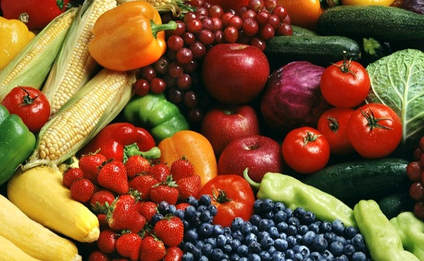 Fruits & Veggies Satisfy Phytochemical Requirements Fruits & Veggies Satisfy Phytochemical Requirements Diet and lifestyle choices go a long way towards curbing cancer risk. Research statistics estimate that healthy diet modifications support to prevent almost 9 of every 100 cancer cases (9%) and almost 5 of every 100 (5%) cancers could be avoided by maintaining a healthy body weight. While diseases such as obesity, heart attacks and blood pressure mostly occur as a result of our lifestyle choices and the foods we eat, breast cancer does not follow this ideology. No food or diet can prevent the occurrence of breast cancer, but some foods can increase your health quotient, make you as fit as possible, boost your immune system and keep you at a minimal risk for breast cancer. Furthermore, as breast cancer is a hormone-driven disease having control over your weight (especially over the age of 50 as obesity is the most concerning risk factor) is helpful. Choicest Selections Breast cancer occurrence is lower in countries that follow a plant-based diet and is low in total fat. There is even one study that shows that girls in their puberty period who indulge in high-fat diet but don’t become obese/overweight are at a higher risk of developing breast cancer later in life. Breast cancer starts in different places, grows in different ways and requires different kinds of treatment. As a society, we are used to taking a pill to cure our illnesses and diseases and promoting a healthy lifestyle to reduce breast cancer risk might seem intriguing to some individuals. But the fact remains that avoiding obesity, smoking and alcohol consumption, eating a well-balanced diet and engaging in physical activity lifelong are the best suggestions for decreased breast cancer risk. The following foods can be part of any healthy diet plan and help to avoid occurrence or progression of the disease: Eat 5 portions of fruits and veggies daily: Most RDNs agree that a plant-based diet is healthier than an animal-based one as it is lower in fat content and higher in fiber content comparatively. Eating produce satisfies the phytochemical needs of the body as these biologically active compounds have some of the protective qualities that may fend off cancer. Phytochemical is the general term used here to indicate all plant-based compounds such as antioxidants, flavonoids, flavones and isoflavones. It is highly beneficial to include cruciferous vegetables such as broccoli, cauliflower and Brussels sprouts as these are rich in phytochemicals and also equip the body with plentiful fiber. Other interesting ways to spice up your meal with fruits and veggies include:
A study shows that women who consume more fat after menopause were at an increased risk of breast cancer. Keep fat on the lower side by using a low-fat dressing, avoiding processed meats and cold cuts that are rich in fats and salt, choosing lean cuts of meat, fish and poultry, trimming fats from meat, poultry and fish and removing skin from poultry and fish. Some studies suggest restricting the consumption of red meat as it is associated with increased breast cancer risk. Substitute beef or pork with fish and lamb; eat chicken once a week or use beans or lentils as your main course. Throw in healthy food choices to your diet: Prepare meals in a healthier way sticking to these principles:
A woman’s life might take a detour after marriage, but it takes on a complete roller coaster ride after pregnancy and childbirth. In order to handle such situations, it would be easier if the lady involved takes care of her body before pregnancy and keeps herself fit as a fiddle to handle the overwhelming pressure thereon.
Women look after their body with ample care before marriage. Right after marriage, many girls ignore their physical health and toil for the family. You might call it sacrifice, selflessness or by any other term, but this is sheer ignorance which can lead to body complications later. Every woman is a boon to her family and she must ensure to take good care of her health to support and work for her own wellness and for other family members. Apart from this, only when a lady keeps herself fit before conceiving it would benefit her during and after pregnancy. Physicians, gynecologists and RDNSs recommend women in childbearing age to take good care of their physical and mental health by eating healthy foods, exercising regularly and leading an active lifestyle. While this remains as a general rule, it turns out to be effective in various other aspects of health as well. Being fit and healthy during pregnancy reduces the risk of gestational diabetes in women. Gestational Diabetes Mellitus (GDM) Gestational diabetes mellitus is defined as glucose intolerance that develops during the second or third trimester of pregnancy. It is also possible that glucose intolerance could have started right after the onset of pregnancy but remained unnoticed until later. GDM is a temporary condition that occurs during pregnancy and carries the risk of type 2 diabetes in the long run. In GDM, the blood glucose levels are way above normal but not high enough to be diagnosed as diabetes. GDM remains a severe yet neglected threat with several complications including high blood pressure, large birth weight infants and obstructed labor. It is well-observed that almost 50% of women with GDM develop type 2 diabetes within 5 or 10 years after delivery. Sadly, almost 1 in 3 women with diabetes are of reproductive age. Risk factors for GDM include overweight/obesity, excessive weight gain during pregnancy, family history of GDM or occurrence of GDM during previous pregnancy. A pregnant lady with GDM increases the chances of future obesity and type 2 diabetes in offspring. Weight gain during pregnancy contributes to 30% maternal fat accumulation and varies in composition depending on the trimester. Weight gain during the early stages of pregnancy is mostly fat and could influence resulting insulin resistance. Study According to the latest study by researchers at the University of Iowa, expectant mothers who were fit and active before pregnancy are at a reduced risk of developing gestational diabetes. The researchers analyzed data from 1,333 women over a 25-year period and during this period, the women reappeared seven times for data collected and reported whether they became pregnant, gave birth or developed gestational diabetes. There was even a fitness test performed on these women where the researchers made them walk on a treadmill at increasing speeds and various steepening inclines for two-minute intervals. During the study period, 164 women developed gestational diabetes and it was noticed that, women who remained fit during the pre-pregnancy period had a 21% lower risk of developing gestational diabetes than those with lower fitness levels. Time and again researchers insist on one point solely-get in better shape before becoming pregnant. This research also serves the physicians community to use it as a proof to recommend higher pre-pregnancy fitness to patients, especially those at a greater risk of gestational diabetes. It has been noted that most women who develop GDM later during pregnancy already posses elevated metabolic risk factors before pregnancy. Individuals who are determined to become fit can engage in 150 minutes of moderate- or vigorous physical activity per week (30 minutes per day, five days per week). Walking, cycling or aerobic exercises are included in moderate-activity list while jogging, Zumba or cross fit constitute vigorous activities. It is appreciable that women are extremely cautious during pregnancy taking care of what they eat and what exercise they get. It is better to get in touch with an RDN at www.firsteatright.com to chalk out your diet plan before, during and after pregnancy for a balanced diet that is easy to follow as well as healthy to eat. This study is an eye-opener for all women in childbearing age to engage in healthy behavior before getting pregnant as well. Pre-pregnancy precautions include increased intake of dietary fiber, decreasing consumption of sugar-sweetened beverages, animal fats, cholesterol-rich foods and red meat, replacing animal proteins with proteins from nuts and decreasing intake on heme iron (animal sources of iron). Apart from diet, exercising regularly during pre-pregnancy stages was greatly associated with reduced risk of gestational diabetes. Taking up a weight-loss diet, individuals succeed in completing the program wonderfully and lose the target weight. When they repeat it again to lose weight further, they don’t achieve the desired results as they have reached a weight-loss plateau. Obese people burn less calories and dieting often puts an individual in a plateau beyond which further weight loss becomes a strenuous task. But, the reason behind these was unknown until now and our body was challenged every time we tried vehemently to stay in shape. We might follow the perfect healthy diet, do exercise and avoid all unhealthy foods but still find it difficult to lose the extra weight that keeps hanging all over our body.
Energy Our body needs energy to perform any activity and we derive this energy by burning fat tissues. Sometimes, our body decreases this fat-burning process to store the fat to be used later in times of urgent needs. Humans, in general are quick-witted and smart at storing resources for later use in need of energy and our body too works in the same way. Human body works vigorously to suppress energy expenditure for use later which is nature’s way of preparing itself for famine or drought. But, why does our body sometimes store excess fat that can lead to overweight/obesity and what are the mechanisms involved in this “fuel” storage? When a research group tried to identify this, they came across an enzyme TANK-binding kinase 1 (TBK1), which played the key role in deciding how much fat to burn and how much fat to keep in store for use later. Two prime observations were noted linking slowing metabolism in obesity and fasting. There are two feedback loops intertwined to self-regulate this system.
Locus of control (LOC) remains as a much unexplored territory in the healthcare industry. Even most individuals are unfamiliar with the term which becomes crystal clear and relatable once it is defined. The concept was designed in 1954 and is an individual’s belief system regarding his/her experiences and the factors associated with success or failure. It is the tendency of people to believe that control resides internally within them or externally with others/situation.
Internal/External LOC LOC can be internal or external depending on the person involved. People with an internal LOC attribute success or failure to themselves and believe that events in their life occur primarily from their own actions. Individuals with an external LOC attribute success to luck or fate. For example, when a project result is announced, people with an internal LOC praise or blame themselves for the result whereas those with an external LOC blame/praise factors such as timeframe and other team members for success or failure of the project. Health LOC Health locus of control (HLOC) attributes people’s opinion about who or what is responsible for management of their health conditions. LOC affects a person’s attitude towards health and can influence outcomes too. When adults believe that their health is in their hands, it results in decreased use of emergency departments, reduced number of diseases, adherence to healthy habits, following treatment procedures and sticking to general health goals. People with an external LOC believe that their health is in the hands of doctors, nurses and fate and mostly do nothing to keep their health in check which affects quality of life. There are numerous studies that discuss about physician- patient relationship which commonly discusses about satisfaction with one’s physician, a modus operandi between the patient and the physician regarding the medical problem at hand and above all, trust and belief in the physician. Whereas, the health locus of control which deals extensively about the way in which an individual attributes his/her health to his/her own actions or environmental circumstances and other external factors is an area that remains much unexplored compared to the physician-patient relationship. One major characteristic of a physician-patient relationship is trust and this measure depends on various attributes. Patients with HIV had significantly higher trust in their physician and also those who have a family background of trusting and accepting doctors are likelier to exhibit the same characteristics. Also, individuals suffering from multiple chronic diseases are constantly in touch with their physician and ultimately, develop higher levels of trust with them. HLOC’s Role in Obesity Locus of control occupies prime importance in the field of obesity because as per definition, it indicates whether an individual believes that his/her choices and the external environment are under his or her control or not. That’s because, along with hunger and satiety cues an individual’s ability to understand these cues will be greatly appreciated and help in determining how obesity starts developing and proceeds. When an individual solely relies/complains on external factors affecting obesity, there are two ways to look into this. Generally, an external LOC is related to depression and anxiety which makes these individuals give up on an issue rather than sticking to perseverance and completing it. Such people have higher levels of cortisol which can affect long-term health. Cortisol might trigger the individual to eat more due to stress and become obese. Another dimension is that, externally focused people might benefit from help provided by dietitians, nutritionists and healthcare providers. All said and done, internally focused individuals reap more benefits and tend to succeed in their endeavor to lose weight compared to their externally focused counterparts. This is true! When an individual is determined from his/her end to take up weight loss as a priority task and work on it whatever effort and commitments it might take, he/she is sure to succeed, at least to a greater extent. But, when an individual relies solely on external factors, the person might follow the diet prescribed and exercise for some time but ultimately give up on his/her goals and blame the dietitian, physician, workload, family commitments or lack of time for his/her ultimate failure. Dietitians at www.firsteatright.com can be of utmost help in enabling an obese/overweight person to lose weight in the right way with constant encouragement, support and the right kind of diet chart and exercise plan. Besides healthcare providers and physicians, family, friends and peers form the major chunk of population who are responsible for the relationship between locus of control and obesity. These people play a vital role in the externally focused group by encouraging the individual, motivating him/her, discouraging sedentary behavior and making it less available (parents can do this at home). HLOC & Diabetes Control HLOC is also used in the field of diabetes to assess a patient’s response using different studies. Researchers have concluded with these studies that a person enforces more control over his/her health when the locus of control is internal rather than being external. This greater control leads to improved personal health and those individuals diagnosed with diabetes are likelier to stick strictly to their health regimen when they experience an increase in internal locus of control. A study of 115 patients with type 2 diabetes proved that perceived control was negatively related to HbA1c levels. A high-perceived control had a beneficial effect on individuals with type 2 diabetes. When physicians encourage patients to follow dietary regulations and exercise regularly, appreciate their success by giving positive feedbacks and help them feel in control of their illness by motivating them, it might enhance internal locus of control and be used for effective intervention. |
AVOID FRAUD. EAT SMART.+91 7846 800 800
AuthorDietitian & Nutritionist Dr. Nafeesa Imteyaz. Archives
July 2024
Categories
All
Dr. Nafeesa's Blog @blogspot |
- Home
- Written Testimonials
- Consult
- Clinics
- Blogs
-
Diet & Nutrition
- Diabetes Reversal
- IVF IUI not needed for PCOS PCOD Infertility
-
Medical Nutrition
>
-
Disease & Conditions
>
- Infertility | PCOS
- Diabetes Mellitus
- Cholesterol
- Hypothyroid
- Kidney Problems
- Hypertension
- Cardiovascular Diseases
- Liver Diseases
- Gastro intestinal disorder
- Cancer
- Metabolic Disorders
- Orthopedic Disorders
- Eating Disorders
- Dietary Recall
- Weight Record Filled By Clients
- Online Payment Transaction Details
- Online Clients Weight Check Form
- Our Program Package Service Charges
- Weight Record 2017 Clients
- Measurements sent by Clients
- Terms & Conditions Of Payment
- Thanks. Your Form is Submitted
- Video Testimonials
- Lifestyle & Wellness
- Lifestyle & Wellness Blog
- Allergy & Intolerance
- Weight Loss / Gain
- Weight Loss / Slimming Blog
-
Disease & Conditions
>
- Life Cycle Nutrition >
- Sports Nutrition >
- Integrity in Nutrition
- Knowledge Centre
© COPYRIGHT 2022. ALL RIGHTS RESERVED. FRST HEALTHCARE PVT LTD.
Dr. Nafeesa Imteyaz of First Eat Right clinic, is the Best Dietitian Nutritionist in Bangalore. Best Dietitian Nutritionist in Pune. Best Dietitian Nutritionist in Hyderabad. Best Dietitian Nutritionist in Chennai. Best Dietitian Nutritionist in Mumbai. Best Dietitian Nutritionist in Delhi. Best Dietitian Nutritionist in Kolkata.






